Vegas Before the Glitter
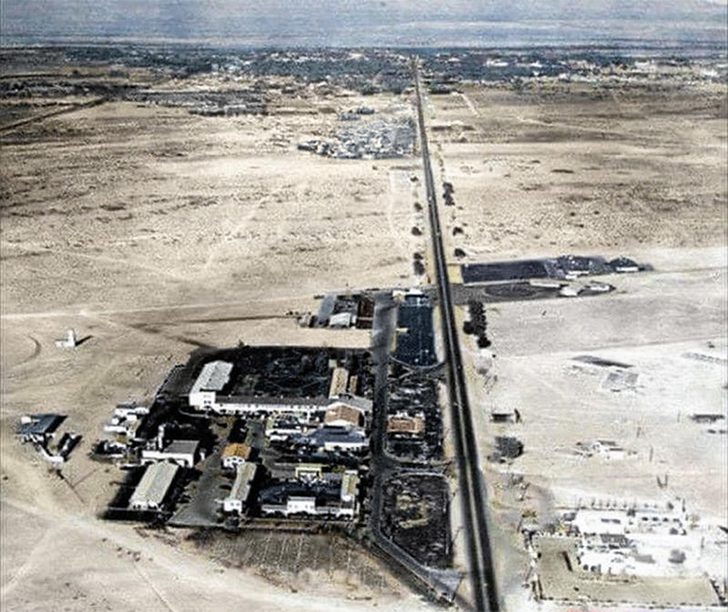
An aerial view of Las Vegas in 1947 reveals a modest settlement far from the neon-lit metropolis we know today. This once-unassuming desert town blossomed rapidly post-World War II, fueled by the legalization of gambling in 1931 and the influx of dam workers. The transformation was meteoric; casinos, hotels, and showbiz venues sprouted.
The happenings turned it into a world-renowned entertainment hub. This evolution is epitomized by the Las Vegas Strip, a testament to the city’s adaptability and innovation. From a sparse settlement to a bustling cityscape, the city’s journey is a dazzling tale of growth, resilience, and the quintessential American dream of transformation and renewal.
Riding with the King
Elvis Presley, seen with Mary Kathleen Selph, a dancer and singer at The Whirlaway Club, epitomized cool riding through Memphis on his 1971 Harley-Davidson FLH Electra-Glide in 1972. Frozen by a Commercial Appeal photographer, their moment reflects a lesser-known aspect of the “King of Rock and Roll’s” life.

While their relationship wasn’t widely publicized, the duo dated briefly through the 1972 summer, but their union was cut short by an automobile accident that took Mary’s life at 20. This image goes beyond a simple ride; it’s a snapshot of Elvis’s lifestyle, where music, passion, and the open road merged, encapsulating his spirit in his beloved Memphis.
Rising Columns of St. Louis Justice
Workers installing a Greek revival architectural column on the Civil Courts building in St. Louis in 1928 marked a significant moment in the construction of this historic structure. The building, completed in 1930, stands as a magnificent example of Greek revival architecture, distinguished by its ionic columns and a grandiose dome.
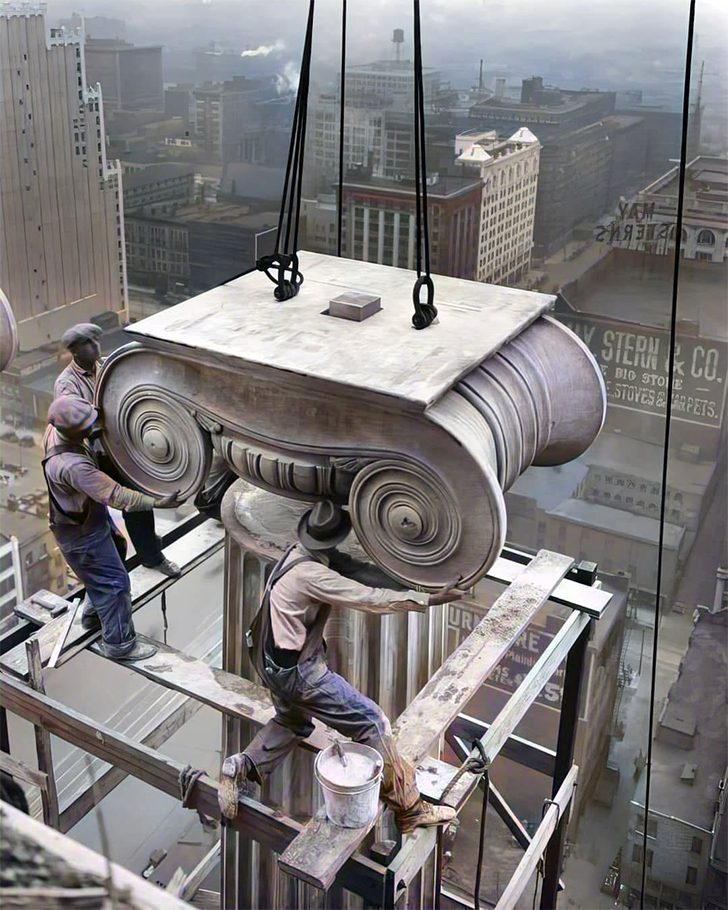
The Maison Carrée inspired its design in Nimes, France, and the structure symbolizes the gravitas and dignity of the judicial system. Towering 14 stories, the building isn’t only a functional space for legal proceedings but also an architectural landmark, reflecting St. Louis’s commitment to blending civic utility with aesthetic grandeur.
Safety Shifts in Car Ads
This 1962 AMC Rambler advertisement chillingly features a reclining front seat with a baby sleeping on it while the mother drives. At the time, this portrayed a sense of comfort and innovation. Today, it starkly contrasts modern child safety standards in vehicles.
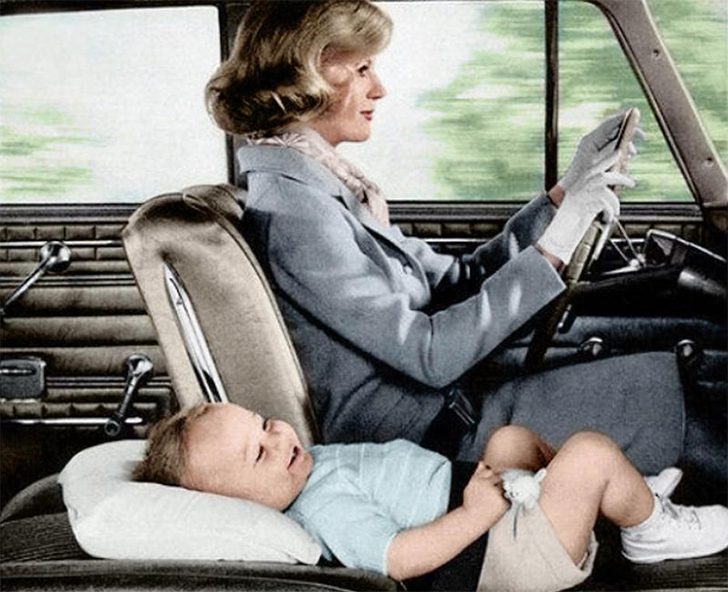
Modern regulations mandate using child safety seats and recommend that children sit in the rear, especially those under 12, to avoid airbag-related injuries. This shift reflects a significant evolution in automotive safety awareness. The ad, once a symbol of convenience, now serves as a reminder of how far we have come in prioritizing the safety of our youngest passengers.
Sky High Fashion of the 1970s
Pacific Southwest Airlines flight attendants in the early 1970s epitomized airborne fashion flair. Their uniforms, vibrant ensembles of orange and pink with matching fascinators and knee-high plastic boots, turned heads in the aisles. This bold fashion statement was part of a broader trend in the airline industry, where uniforms were used for both functionality and as a marketing tool.
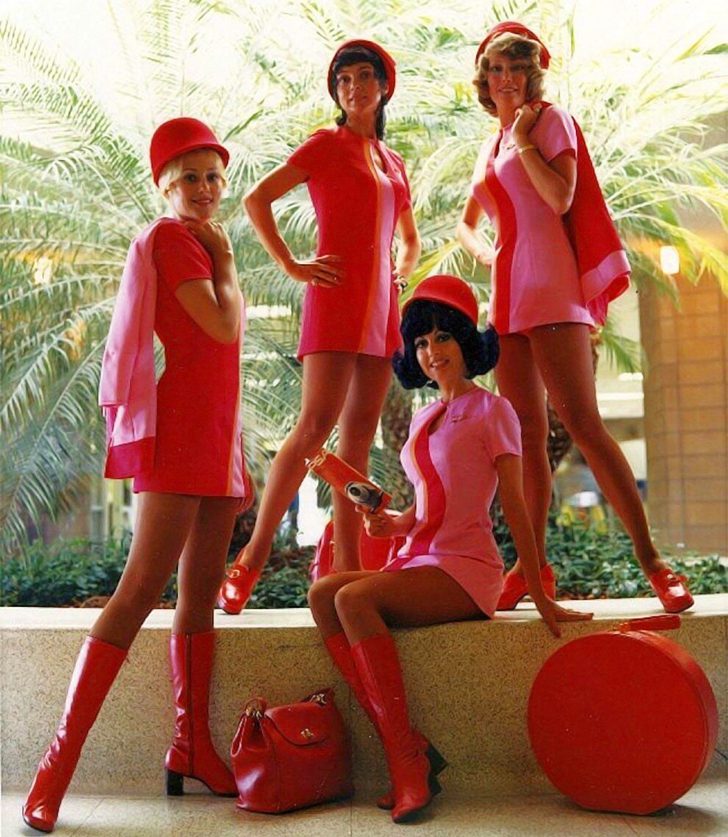
These outfits reflected the era’s playful, optimistic spirit, and airlines often used them in advertisements to showcase their modern, fun-loving image. This approach marked a shift in airline advertising, focusing on the glamour and excitement of air travel, with attendants as the stylish ambassadors of the skies.
Marble Echoes of Sorrow
Giuseppe Sanmartino’s “Veiled Christ,” sculpted in 1753, is a masterpiece of emotion and skill carved from a single marble block. This exquisite work, housed in the Sansevero Chapel, Naples, captures Christ in a moment of profound pain, draped with a remarkably thin veil, a testament to Giuseppe’s genius.
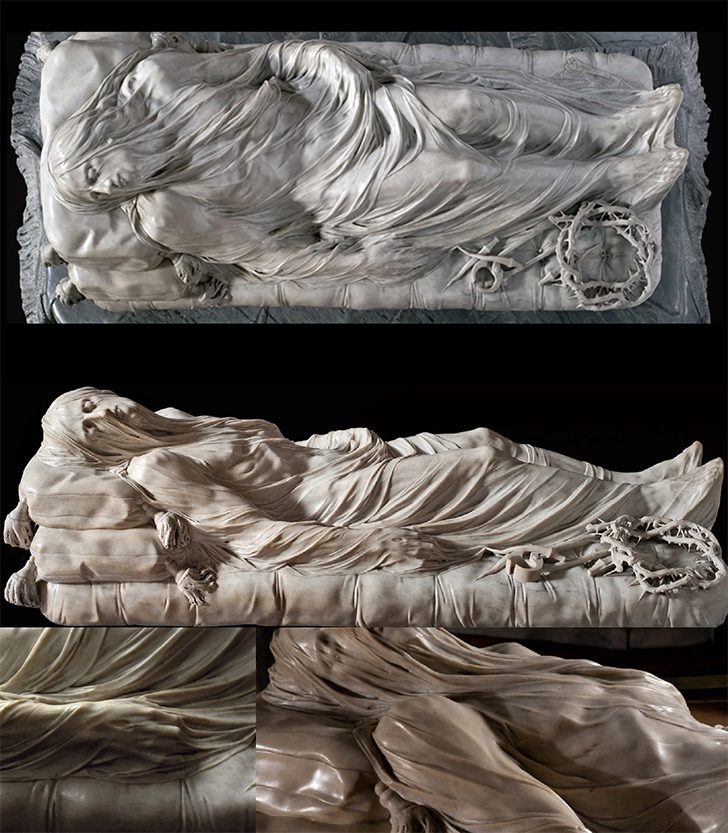
Rumors once suggested the veil was real fabric transformed into marble by alchemy, highlighting its lifelike appearance. The sculpture’s intricate details, from the pained expression to the delicate portrayal of wounds, reflect a deep understanding of human anatomy and suffering. “Veiled Christ” is a frozen moment of grief, a tangible echo of sorrow sculpted in stone.
Secret Notes in the Classroom
This rare 1950s photo captures girls cleverly passing notes in class. The girl in blue, smartly using her book as a screen, subtly hands a note to her friend. Both maintain straight faces, ensuring their secret communication remains undetected. It portrays a timeless aspect of student life, albeit one that has evolved with technology.
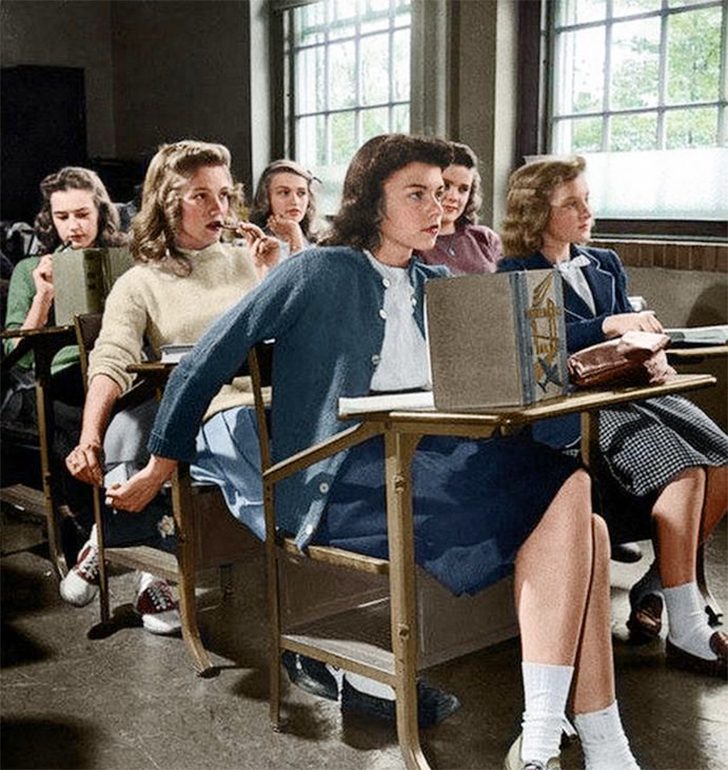
Today, such clandestine exchanges have shifted from paper to digital, with students using smartphones and messaging apps. While the medium has changed, the underlying impulse for discreet communication among peers remains a constant in the classroom dynamic, reflecting the enduring nature of youthful ingenuity and the desire for private conversation in shared spaces.
Vampire Gala of 1994
The 1994 premiere of “Interview with the Vampire” was a star-studded affair, with Christian Slater, Tom Cruise, Kirsten Dunst, Antonio Banderas, and Brad Pitt gracing the red carpet. This cinematic adaptation of Anne Rice’s novel brought together an ensemble of A-listers, each embodying their vampiric characters with compelling depth.
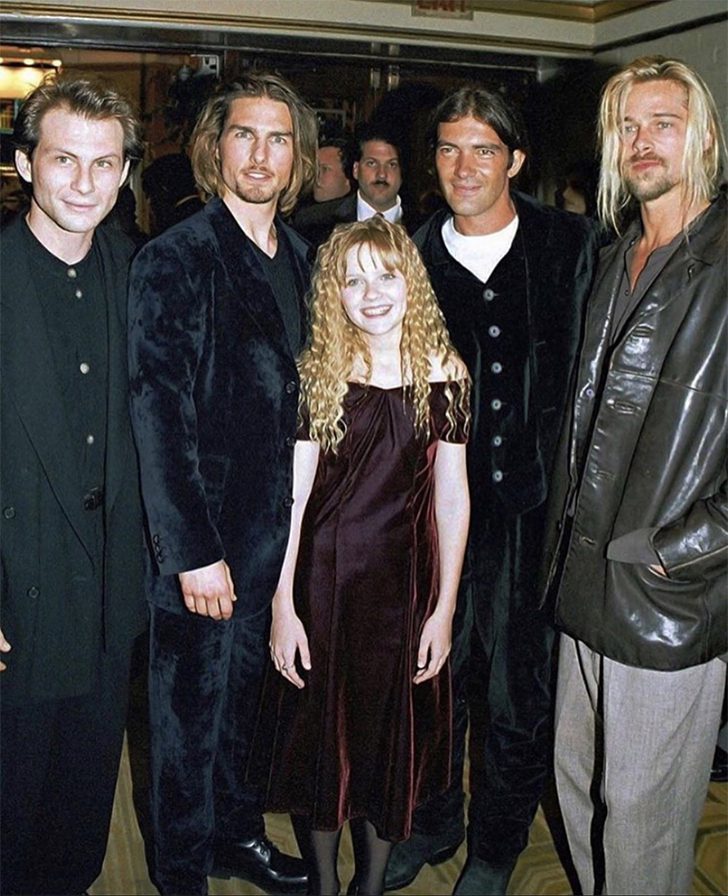
Known for its gothic allure and rich storytelling, the film also marked a significant turn for young Kirsten, showcasing her talent in a challenging role. The striking image of these actors together captured the essence of the movie: a blend of elegance, darkness, and timeless intrigue, leaving a lasting impression on the vampire genre and Hollywood glamour.
Tree-Top Fans at Wrigley
Atop a tree outside Wrigley Field in 1932, Chicago Cubs fans found an inventive way to watch the World Series. With the stadium packed to the brim, these enthusiasts chose an elevated view, witnessing Babe Ruth’s legendary “called shot.” This era’s intense baseball fandom often led to packed venues, prompting fans to seek alternative spots like tree branches.

Their unique choice underscored the unwavering passion of Cubs supporters, showcasing their willingness to overcome obstacles for a glimpse of the game. This unconventional approach offered a clear view and vividly illustrated the strong communal spirit and enduring allure of America’s favorite pastime.
Warsaw’s Youngest Hero
In a poignant August 1944 photograph by Eugeniusz Lokajski, eight-year-old Róża Maria Goździewska, known as “The Little Nurse,” became a symbol of resilience during the Warsaw Uprising. Despite her young age, the Polish youngster played a crucial role, delivering messages and assisting wounded insurgents.

Her fearless actions amidst the war’s chaos reflected the Polish resistance’s extraordinary courage. This image, showing her in a nurse’s outfit, highlights the harsh realities faced by children in wartime. Róża’s contributions went beyond her years, embodying the spirit of defiance and hope that defined the uprising, making her an enduring figure in her country’s history.
A Glimpse of a Pueblo Princess
Carl Moon’s 1905 portrait of “The Chief’s Daughter” captures the serene beauty of Loti-Kee-Yah-Tede, a figure from the Pueblo community in New Mexico. Adorned with a beaded necklace, her image is more than a mere photograph; it’s a window into the rich cultural tapestry of Native Indian Americans.
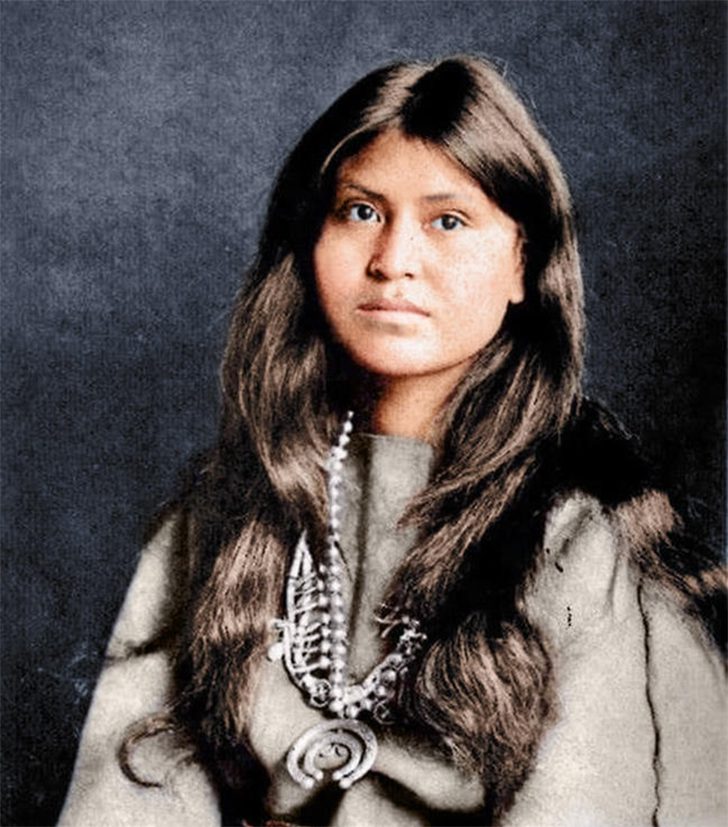
The Pueblo people, known for their intricate art and deep spiritual connections, are woven into America’s history. Loti-Kee-Yah-Tede’s portrait reflects the dignity and grace of her heritage. Through his lens, Carl not only preserved her likeness but also highlighted the elegance and resilience of a community often overshadowed in early American narratives.
Mick Jagger’s Playboy Moment
Mick Jagger was captured at the Original Playboy Mansion in Chicago in 1972 and exudes the quintessential rockstar aura. Clad in a light blue vest, he’s flanked by two women, including Playboy Mate Mercy Rooney, with his arms casually draped around them. This mansion, Hugh Hefner’s base until 1974, was more than a lavish residence.

It became a cultural hotspot, synonymous with extravagant parties and celebrity gatherings. The abode’s opulent decor and exclusive guest list made it an emblem of the era’s hedonistic glamour. With his charismatic presence, Mick fit perfectly into this world of luxury and leisure, embodying the rock-and-roll lifestyle that the residence celebrated.
Pamir’s Final Voyage
The Pamir, captured sailing around Cape Horn in 1949, is a poignant emblem of the bygone era of commercial ocean-going sailing ships. This majestic vessel, one of the last of its kind, met a tragic fate, though. In 1957, while carrying a cargo of barley, it succumbed to a hurricane in the Atlantic.
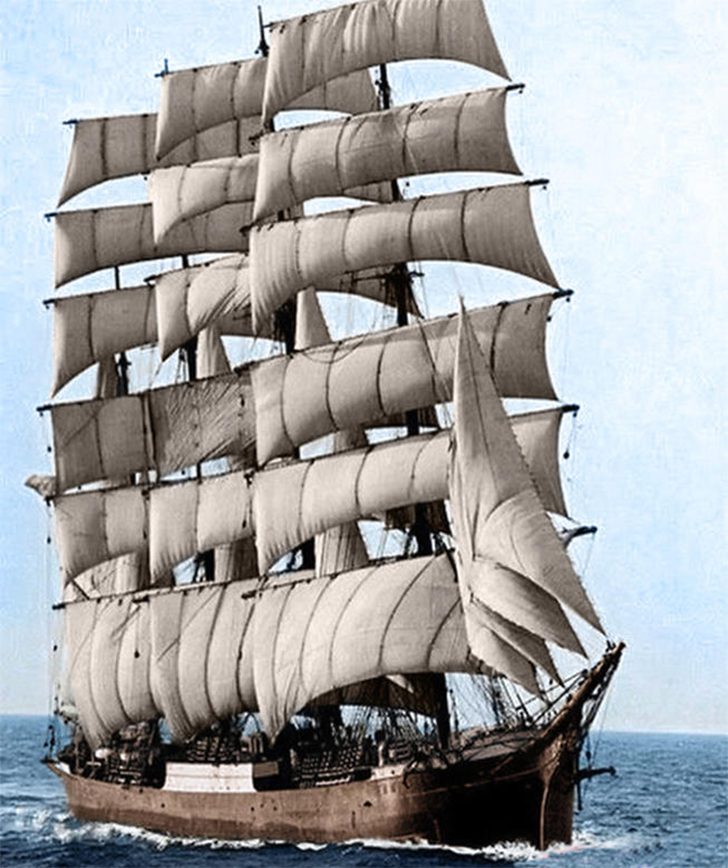
It tragically lost 80 of its 86 crew members. This disaster marked the end of an era as maritime commerce transitioned to more reliable and faster steam-powered vessels. The image of the Pamir at Cape Horn thus symbolizes both the grandeur of sailing ships and the sea’s relentless, often unforgiving nature.
Echoes of the Old West at Elk Horn
The Elk Horn Saloon, standing since 1915 in Montana, was a quintessential emblem of the Old West. Inside, bare walls, except for mounted antlers, echoed with tales of cowboys and settlers. On the floor, spittoons witnessed the saloon’s rugged clientele, while a Schlitz beer sign hinted at simpler times.
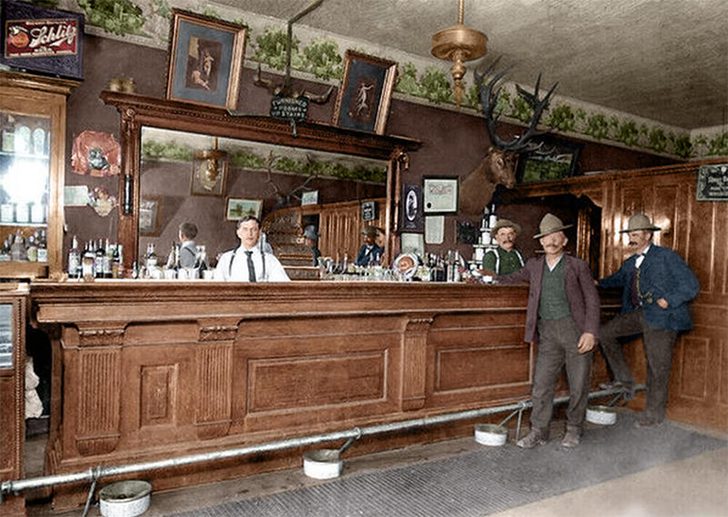
County Sheriff Ed Martin, resting his foot on the bar’s rail, was a familiar figure, embodying the law in a lawless land. This saloon wasn’t just a drinking establishment; it was a men’s hub, a place where stories unfolded, and legends were born, all under the watchful eyes of the antlers on the wall.
Apes and Revelations
Charlton Heston and Linda Harrison, adorned in distinctive costumes, captured attention in the 1968 film “Planet of the Apes.” Their characters navigated a world where apes dominated, and humans were mute primitives. The actors faced the challenge of conveying complex emotions through heavy makeup and prosthetics, which they executed with skill.
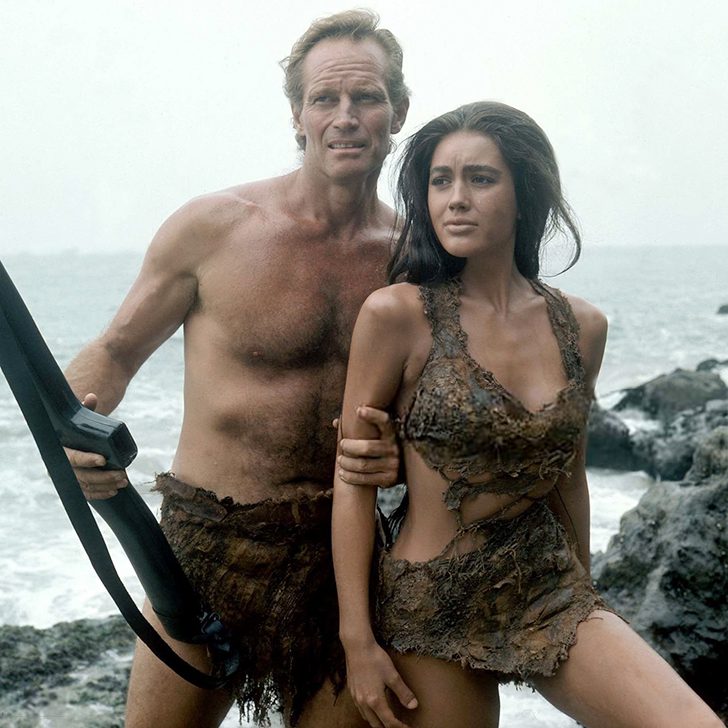
The film, revolutionary for its makeup artistry and thought-provoking narrative, was a box office success. It sparked several sequels and a franchise and left a lasting impact on science fiction. The movie’s exploration of themes like humanity, civilization, and survival resonated with audiences, securing its place as a cinematic classic.
Helen Mirren’s Skyward Gaze
This 1967 snapshot captures a young Dame Helen Mirren at the dawn of her acting career, her striking blue eyes gazing skyward. Then, at 22, she exuded the poise and beauty that would become her hallmark. She has embodied versatility and depth throughout her illustrious career, excelling in various roles.

From Queen Elizabeth II in “The Queen” to a tough detective in “Prime Suspect,” her remarkable talent earned her numerous accolades, including an Academy Award, BAFTAs, and Oliviers. This early image of Helen hints at the stellar career ahead, showcasing the potential of a star who would become revered for her powerful performances and enduring grace.
Elegance on the Edge at Cliff House
Overlooking the Pacific, the second Cliff House, rebuilt in 1896 by Adolph Sutro, stood as a San Francisco landmark in 1907. This incarnation, grander than its predecessor, was famed for its elegant architecture and breathtaking ocean views. It became a cultural hub, hosting numerous works of art, movie sites, and historical exhibitions.
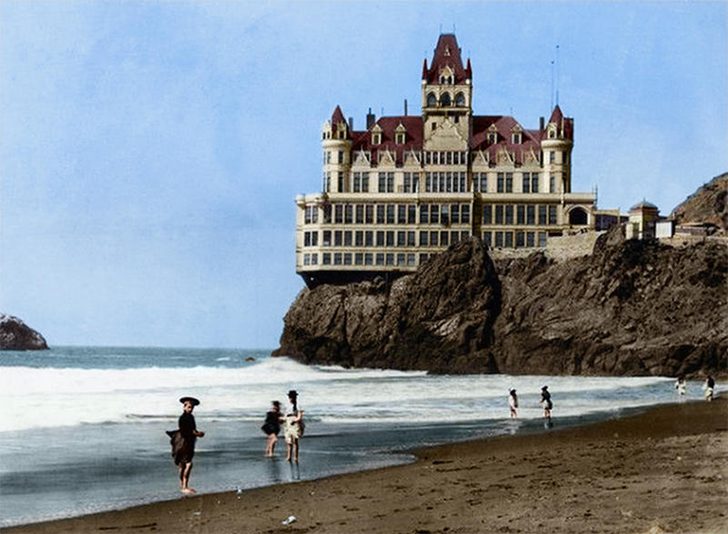
Notably, it featured the Sutro Baths and an impressive collection of shipwreck artifacts, drawing crowds eager for entertainment and education. The Cliff House was more than a building; it was a testament to Adolph’s vision of creating a space where leisure and learning coexisted against the backdrop of the sea’s timeless beauty.
A Mother’s Love in Grayscale
In a rare 1940s photo, Gladys Presley stands beside her son, Elvis, who sports a gray overcoat, foreshadowing his future as the “King of Rock and Roll.” Their bond was profoundly close; Elvis often referred to his mother as his number one girl. This heartfelt connection was rooted in their shared experiences during his humble beginnings.
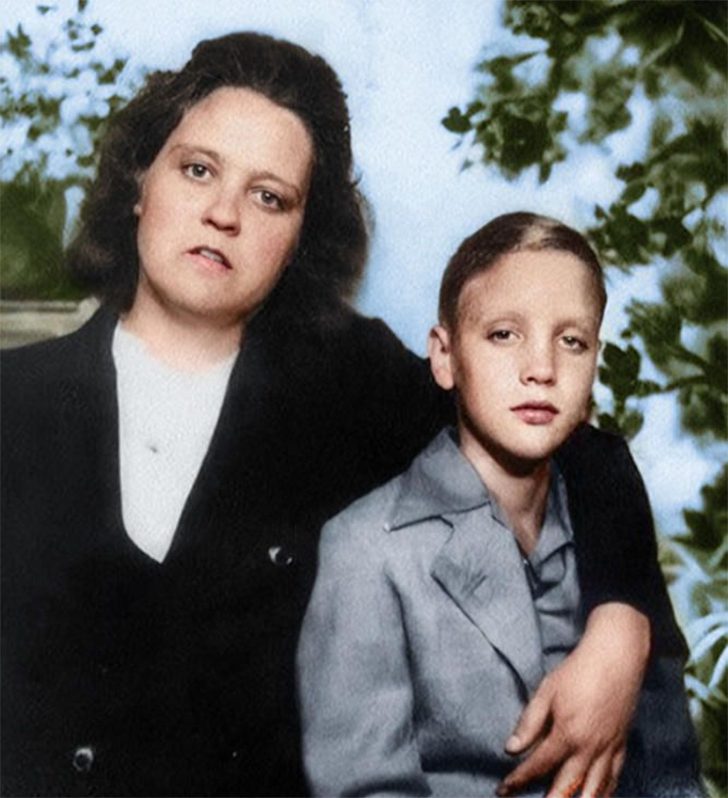
Gladys was a guiding force in her son’s life; her influence shaped his character and values. This photograph is more than a mere snapshot; it’s a poignant reminder of the deep familial ties underpinning his meteoric rise to fame, a testament to a mother’s enduring impact on her legendary son.
Shifting Gears with Linda Vaughn
Linda Vaughn, the iconic “Miss Hurst Golden Shifter” of 1966, looks like someone changing her car wheel, symbolizing her unique role in motorsports. More than a glamorous figure, she broke barriers in a male-dominated field, blending charm with an undeniable knowledge of racing. Her presence at events added excitement and drew attention to the sport.

She played a pivotal role in marketing and promoting racing, inspiring other women to explore diverse roles in motorsports. Linda’s influence extended beyond the racetrack, advocating for women’s increased participation and recognition in the industry. Her legacy is a testament to the dynamic role women can play in the fast-paced world of auto racing.
When Skies and Skyscrapers Collided
July 28, 1945, witnessed an unprecedented tragedy when a B-25 bomber, “Mitchell,” accidentally crashed into the Empire State Building. Enveloped in thick fog, the pilot navigated through limited visibility, leading to the catastrophic impact on the 79th floor. This accident caused 14 fatalities and significant structural damage, highlighting the vulnerability of skyscrapers to aerial collisions.
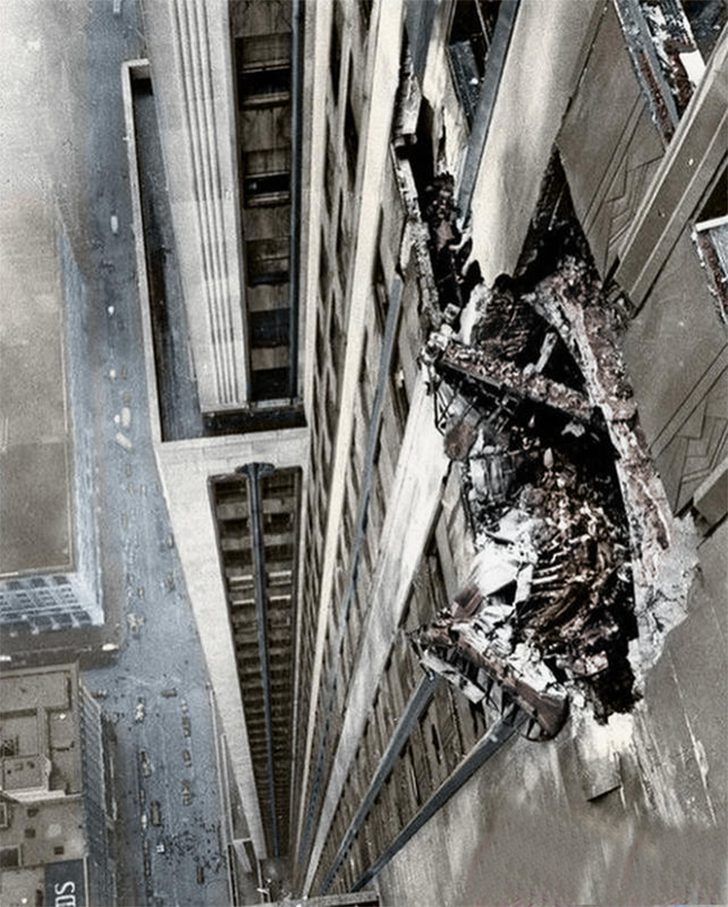
Remarkably, the building reopened just two days later, demonstrating its robust construction and the resilience of New York City. This incident, occurring in the final stages of World War II, spurred changes in flight regulations and air traffic control systems, ultimately enhancing the safety of urban airspace.
Chair Paths in Flooded Paris
During the great flood of Paris in 1910, resourceful residents traversed the submerged city by walking across rows of chairs. This unusual navigation method symbolized the adaptability of Parisians in the face of disaster. The Seine River swelled to unprecedented levels, inundating streets and crippling infrastructure.
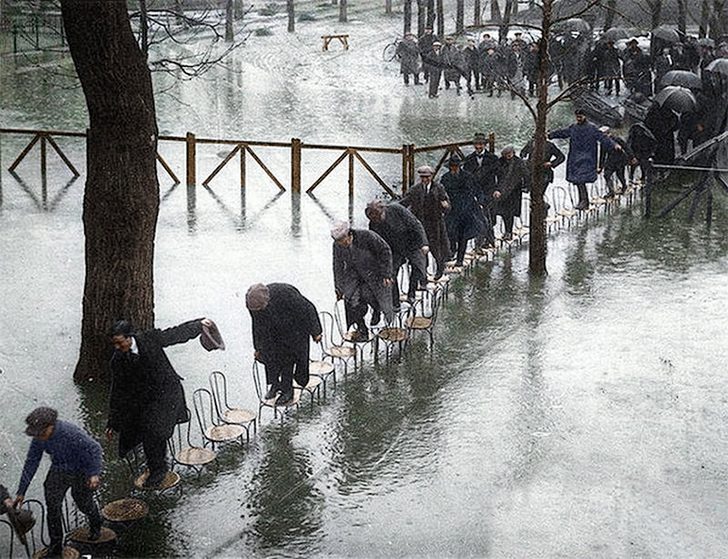
In response, the government mobilized emergency measures, deploying boats for transportation and elevating electrical equipment to prevent outages. Citizens joined in the efforts, forming human chains to transfer supplies and assist those in need. This collective resilience turned a natural calamity into a story of human tenacity, with the chair-lined pathways becoming a poignant emblem of Paris’s indomitable spirit.
A Snapshot of Legends in the Making
A 1985 photo capturing pro wrestler Ric Flair with a young, 12-year-old Dwayne Johnson foreshadowed the latter’s remarkable journey in wrestling and cinema. Popularly known as “The Rock,” Dwayne transformed from a budding fan to a WWE superstar known for his charisma and signature moves.

His transition to acting led to major roles in blockbuster films like the “Fast and Furious” series and “Jumanji.” The Rock’s versatility shone through in diverse roles, from action-packed thrillers to family comedies. This photo with legendary Ric is a nostalgic glimpse of his early admiration for the sport, a seed that blossomed into a stellar career in and out of the ring.
Tiffany’s Peacock Splendor
Designed in 1925 by Louis Comfort Tiffany, the exquisite metal peacock doors of the C.D. Peacock Jewelry Store in Chicago are a testament to artistic brilliance. These doors symbolize rebirth and resilience, mirroring the history of their location. The Great Chicago Fire of 1871 ravaged the city, including the Palmer House, which housed the jewelry store.
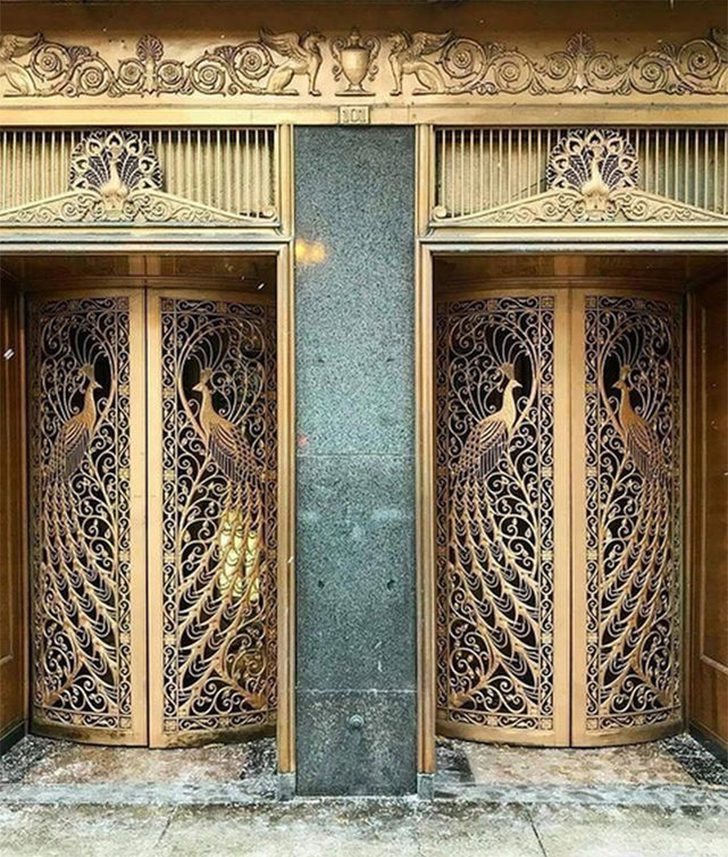
However, like a phoenix rising from the ashes, it was meticulously reconstructed, becoming grander than before. The peacock doors, with their intricate craftsmanship and stunning beauty, represent the store’s elegance and exemplify Chicago’s indomitable spirit, turning a symbol of devastation into one of artistic triumph and urban renewal.
Titanic’s Timeless Tale
Juxtaposing two images—the Titanic in its 1912 dry dock and the same dock empty in 2015—reveals a poignant story of human ambition and nature’s might. The humongous water vessel, a symbol of technological triumph, succumbed to tragedy on its maiden voyage, a story retold in the 1997 cinematic epic.
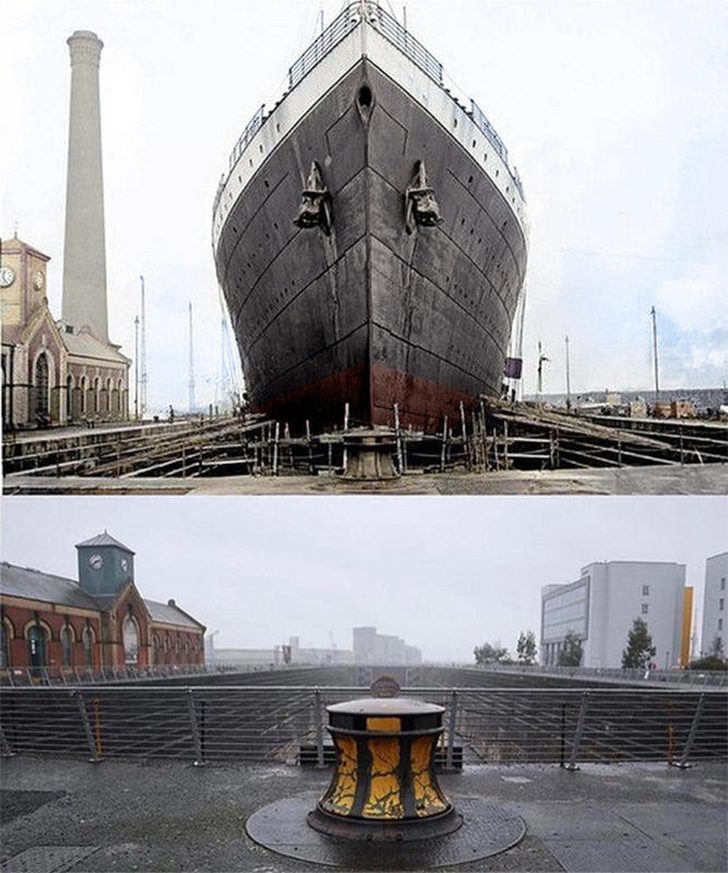
The 2015 image of the vacant dock with buildings around it symbolizes the passage of time and the fading of human achievements into history. These photos collectively narrate a saga of grand dreams, heartbreak, and the persistent allure of the Titanic’s legend, a narrative that continues to captivate and move hearts worldwide.
Grinding Through History
Knife grinders in France in the 1900s adopted a unique posture for their trade: lying face down to prevent back hunching from long work hours. During this meticulous task, some even nestled their dogs between their legs for warmth. While innovative for its time, this method reflected the lack of ergonomic understanding prevalent in the early 20th century.
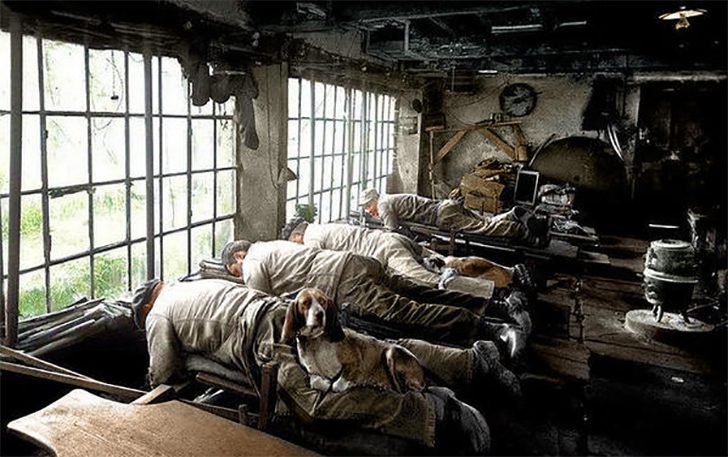
Today, advancements in occupational health emphasize the importance of ergonomics, leading to safer, more comfortable working conditions. Knife grinding itself has evolved, with modern machinery reducing physical strain. This historical glimpse into a grinder’s life contrasts sharply with modern practices, highlighting progress in both technology and workplace health standards.
Crafting Hand of Freedom in 1884
This 1884 photograph captures the Statue of Liberty’s immense white hand emerging amidst the vibrant activity of French workers. This colossal structure, a gift from France to the U.S., symbolized freedom and democracy. Its construction, led by Frédéric Auguste Bartholdi, involved intricate craftsmanship, with the statue’s parts shipped to America for assembly.

Standing tall on Liberty Island since 1886, it has welcomed countless immigrants and remains a global emblem of hope and liberty. The image of its hand, stark and powerful among the busy workers, is a visual reminder of the monumental effort behind creating this enduring symbol of friendship and shared ideals.
Joker’s Grin Behind the Scenes
Cesar Romero is captured in this 1967 snapshot, transforming into the Joker on the “Batman” TV series set. Refusing to shave his mustache, he applied makeup, adding a unique texture to the character’s infamous grin. The Joker, created in 1940 by Bill Finger, Bob Kane, and Jerry Robinson, evolved from a straightforward villain into a complex, iconic figure in popular culture.
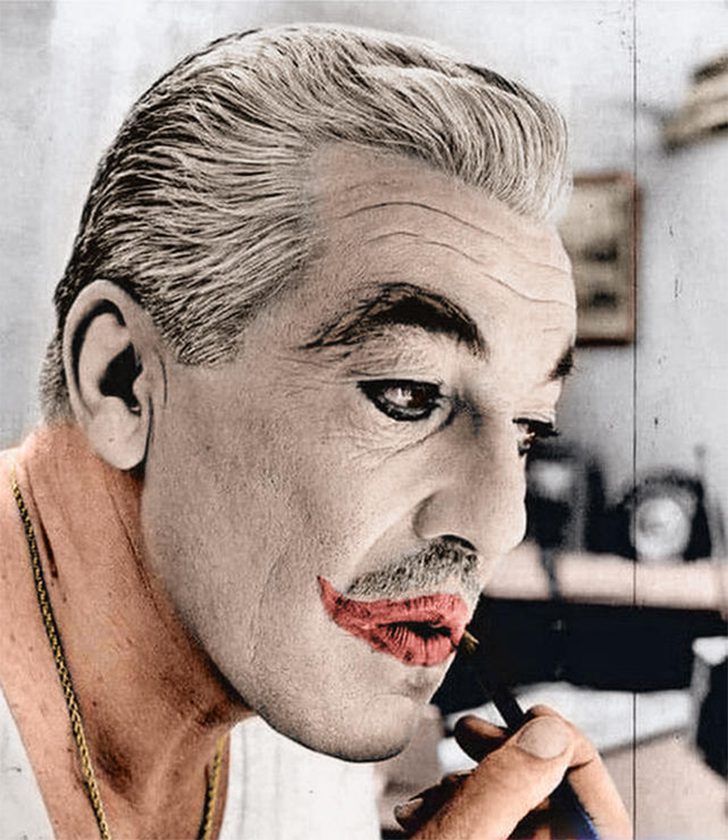
Various actors have portrayed this character, each bringing a distinct flavor, but Cesar’s portrayal, with his theatrical laugh and colorful appearance, set the foundational tone for the Joker’s subsequent interpretations. His makeup ritual symbolized the meticulous crafting of one of comics’ most enduring antagonists.
Sofia’s Bridal Elegance of Yore
A Bulgarian bride and groom from the Sofia region, captured in an early 1900s wedding photograph, showcases traditional ceremonial attire. The bride’s striking flower-like headgear and the groom’s black Soviet military cap reflect Bulgaria’s rich cultural tapestry. Traditional weddings included dances like the “horo,” a lively circle dance symbolizing unity and community.
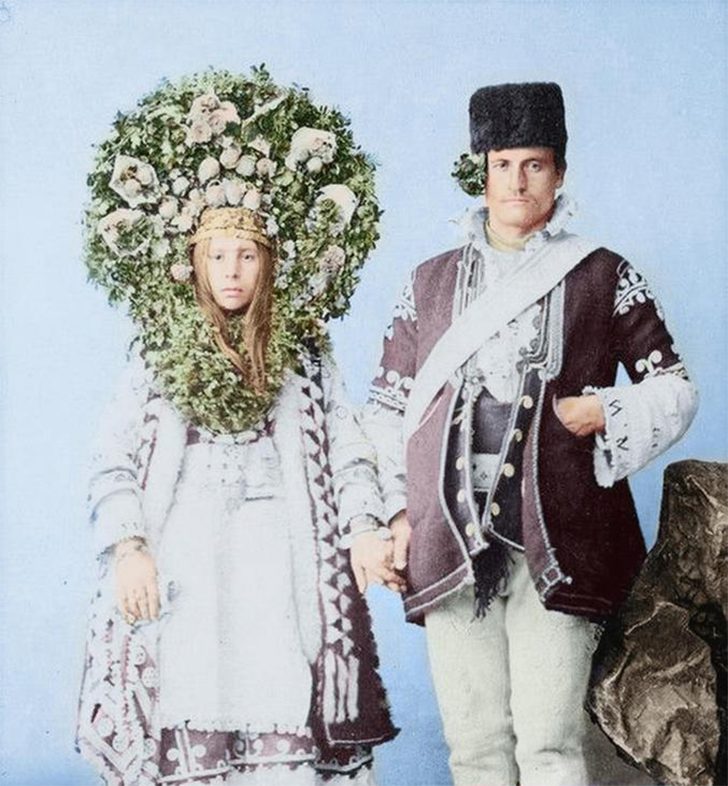
In contrast, Bulgarian Muslims conducted nuptial ceremonies discreetly, often in the bride’s home, with an emphasis on Islamic rituals and customs. These ceremonies, whether Christian or Muslim, were vibrant displays of the nation’s diverse cultural heritage, each with unique attire, dances, and rituals, weaving a rich tapestry of traditions cherished and passed down through generations.
Whispers of Montmartre Stairs
Captured in 1936, the stairs of Montmartre in Paris present an ominous yet captivating sight. Steeped in history, these steps wind through one of the city’s most artistic neighborhoods. Known for their bohemian atmosphere, the stairways have been trodden by countless artists and locals over the years.
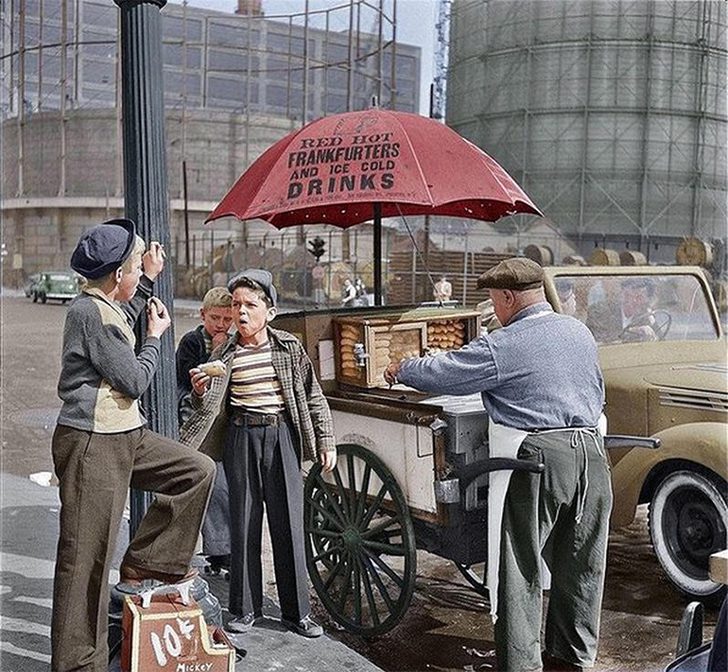
Their weathered stones and shadowy ambiance at dusk add to the area’s mystique, inspiring many painters and filmmakers. As a key feature in this historic district, the stairs connect various levels of the city and link the present with a past filled with artistic endeavors, echoing the footsteps of the legendary artists who once roamed these paths.
Guardians of the Underground
In the 1950s, New York’s tunnel police patrolled in electric vehicles known as “catwalk cars.” These compact, battery-powered cars were designed for the unique environment of the city’s vast subway system, moving efficiently along the tracks’ catwalks. Their primary role was ensuring safety and conducting inspections in the sprawling underground network.
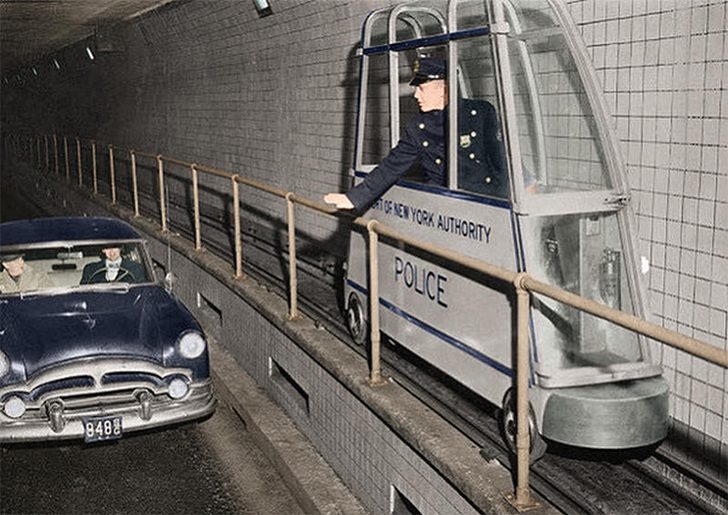
Over the years, technological advancements have transformed these patrols. Today’s tunnel police use more advanced vehicles equipped with modern safety and communication tools, reflecting the evolution of urban transit security. The transition from the humble catwalk car to contemporary high-tech vehicles mirrors the broader progression of urban transportation and public safety infrastructure.
Daring Heights at Snow King
In the 1960s, two daring women rode Snow King’s ski lift in Jackson, Wyoming, dressed in summery attire, with distant snow-capped peaks as their backdrop. Their motive? Not skiing, but a unique photo opportunity. This unusual choice showcased the ski lift’s versatility beyond skiing.
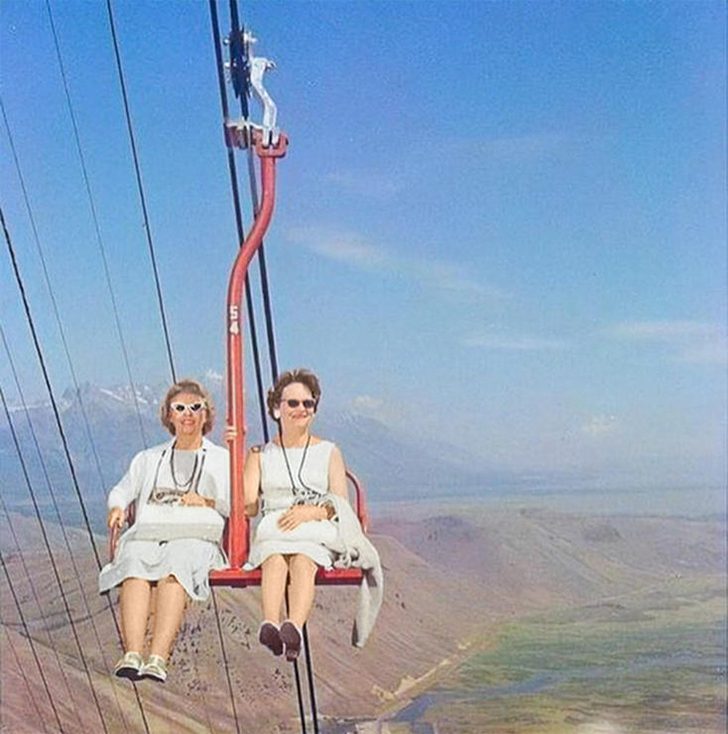
Ski lifts have a captivating history. In 1908, the first ski lift, a basic rope and pulley system, was invented in Germany. Fast forward to 1936, Sun Valley, Idaho, unveiled the first detachable chairlift, revolutionizing mountain access. Today, ski lifts offer not only transportation but also breathtaking vistas, making them integral to winter resorts and a must-experience part of the mountain lifestyle.
Vegas Before the Glitter
An aerial view of Las Vegas in 1947 reveals a modest settlement far from the neon-lit metropolis we know today. This once-unassuming desert town blossomed rapidly post-World War II, fueled by the legalization of gambling in 1931 and the influx of dam workers. The transformation was meteoric; casinos, hotels, and showbiz venues sprouted.

The happenings turned it into a world-renowned entertainment hub. This evolution is epitomized by the Las Vegas Strip, a testament to the city’s adaptability and innovation. From a sparse settlement to a bustling cityscape, the city’s journey is a dazzling tale of growth, resilience, and the quintessential American dream of transformation and renewal.
Elegance on the Parisian Tracks
In 1933, Marlene Dietrich, a symbol of glamour and defiance, was captured outside a Paris train station, exuding confidence in pants alongside her husband, Rudolf Sieber. More than a celebrated actress, the late German-American thespian was a fashion iconoclast, boldly wearing trousers at a time when they were considered solely men’s attire.
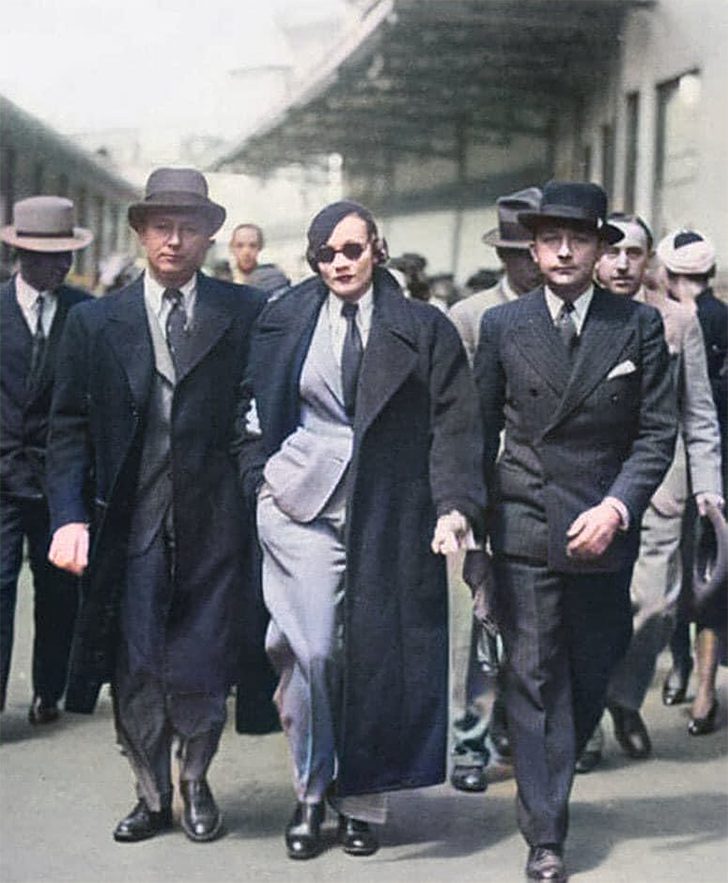
This moment in Paris wasn’t just a casual stroll but a statement of independence and style. Marlene, known for her sultry voice and captivating screen presence, also possessed a fierce individuality, challenging norms and embodying empowerment. Her choice of attire that day reflected her pioneering spirit, blurring gender lines in fashion and society.
Anchoring the Titanic Legacy
Workers photographed beside the Titanic’s anchor chain circa 1910 showcased the monumental scale of the ship’s construction. Forged by hand, the anchor represented the pinnacle of industrial skill and ambition of the time, weighing over 15 tons. Crafted in Netherton, near Dudley, its transport was a spectacle involving rail and horse-drawn wagons.
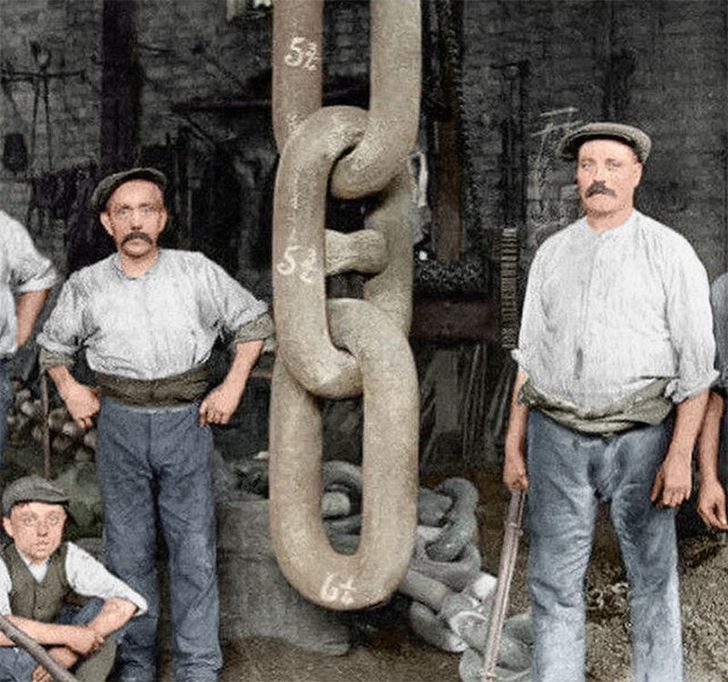
The massive size of the anchor underscored the Titanic’s status, not just as a ship but as a symbol of human achievement—a narrative tragically amplified by its ill-fated maiden voyage. This image of the workers and the anchor chain remains a powerful reminder of the blend of human aspiration and the era’s technological advancements.
Echoes in Stone and Sand
A rare 1850 photograph captures tourists in various poses around the Great Sphinx of Egypt, an ancient sentinel of history. This monumental sculpture, with a lion’s body and a human head, has intrigued scholars and travelers for centuries. Estimated to have been built around 2500 BCE, the Sphinx’s construction showcases the extraordinary engineering skills of the ancient Egyptians.
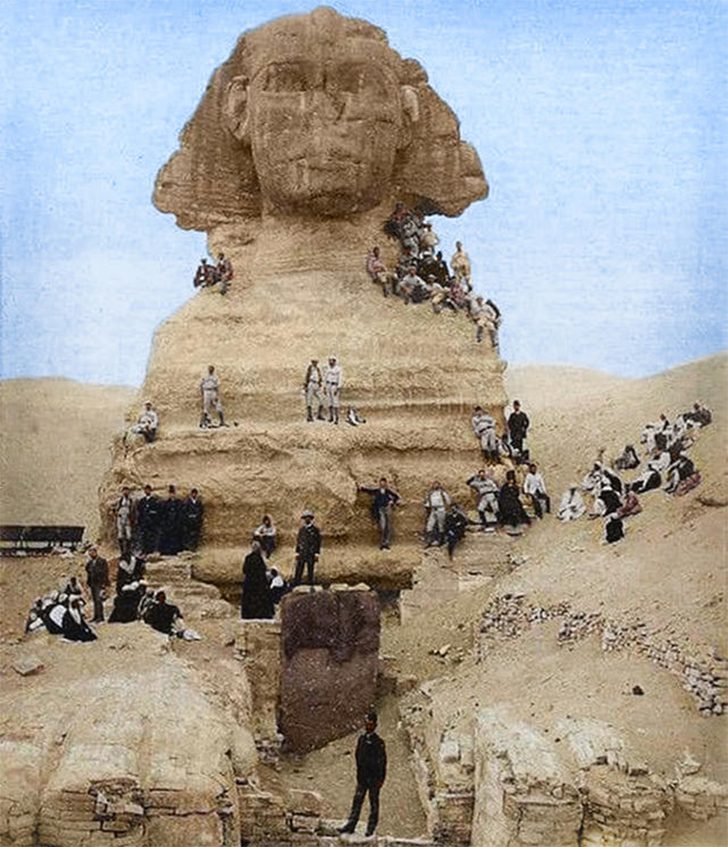
Carved directly from limestone bedrock, it is a testament to their mastery of stonework. Over millennia, the Sphinx has faced erosion and sand encroachment. Yet, it remains a majestic icon of the North African state’s rich past, silently observing the evolution of civilizations from its eternal gaze.
Triumph in Mismatched Shoes
During the 1912 Olympics, Olympian legend Jim Thorpe overcame a unique challenge – competing in mismatched shoes. This unusual situation arose when his shoes were mysteriously stolen, forcing him to find replacements in a trash can. Despite this, he won gold medals in both the pentathlon and decathlon, showcasing his extraordinary athletic ability and resilience.
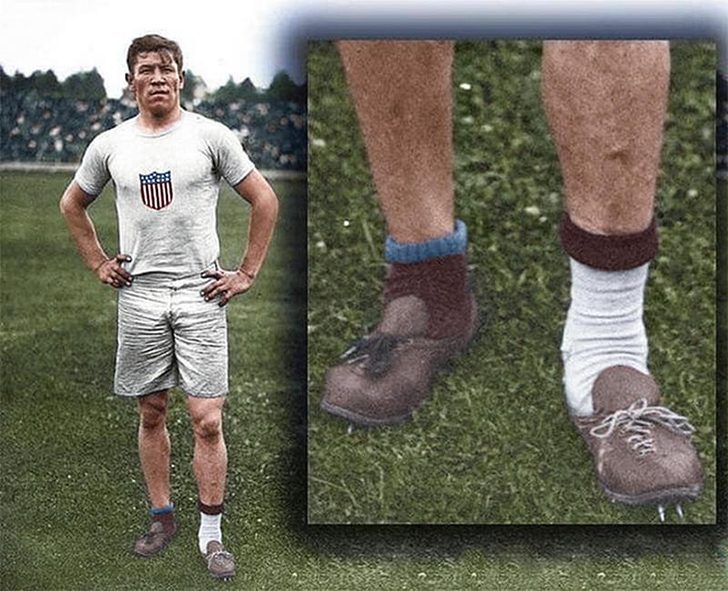
Jim’s Olympic feats were a highlight in a versatile sports career that spanned baseball, basketball, and American football. His journey, defined by triumph and challenge, is a testament to his status as one of the greatest all-around athletes in history, proving that true champions can overcome any obstacle.
Seaside Solitude Amidst Santa Monica’s Bustle
On Independence Day in 1950, this couple found a unique escape at Santa Monica Beach, as captured by Crane. They nestled in a private hole several feet deep, carving out an intimate space amidst a sea of beachgoers. In the background, throngs of people swarmed for Ardea ice cream, a popular treat at the time.
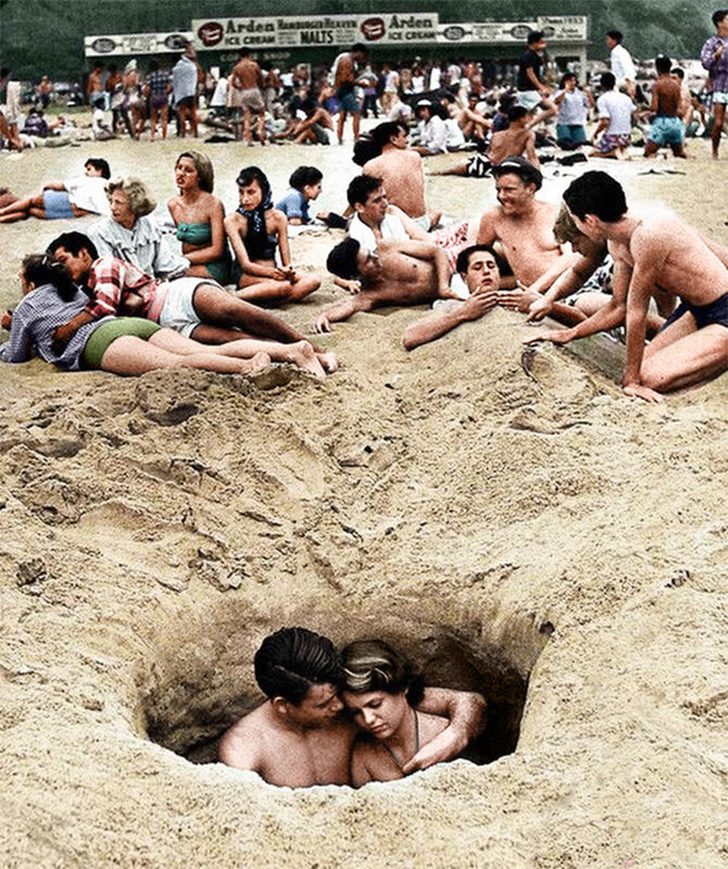
The beach, known for its iconic pier and bustling crowds, has long been a symbol of California’s vibrant coastal culture. This snapshot reflects the beach’s dual nature—a place where one can find both lively communal experiences and, surprisingly, moments of personal seclusion, even in the midst of a festive holiday crowd.


